#DATAANALYTICS
Explore tagged Tumblr posts
Text
Tracking Ad Success with Analytics Tools

Discover how analytics tools like Adobe Analytics measure ad performance, from billboard clicks to online conversions. Learn to track ad success, optimize campaigns, and drive more customers with data-driven insights.
Link : https://maction.com/tracking-ad-success-with-analytics-tools/
#marketresearch#marketing#business#research#digitalmarketing#marketingstrategy#branding#market#entrepreneur#startup#covid#survey#dataanalytics#data#insights#marketanalysis#technology#surveys#datacollection#socialmediamarketing#entrepreneurship#paidsurveys#customerexperience#leadgeneration#dataanalysis#businessstrategy#socialmedia#contentmarketing#emailmarketing#marketingdigital
2 notes
·
View notes
Text
分散型データサイエンティストの事例 | Oneechanblog Podcast
youtube
#podcast#podcastclips#podcasting#podcastlife#podcastshow#podcastshorts#podcaststreamlive#podcaster#data#datascience#dataanalytics#database#datastructures#datavisualization#computerscience#Youtube
16 notes
·
View notes
Text
SQL for Hadoop: Mastering Hive and SparkSQL
In the ever-evolving world of big data, having the ability to efficiently query and analyze data is crucial. SQL, or Structured Query Language, has been the backbone of data manipulation for decades. But how does SQL adapt to the massive datasets found in Hadoop environments? Enter Hive and SparkSQL—two powerful tools that bring SQL capabilities to Hadoop. In this blog, we'll explore how you can master these query languages to unlock the full potential of your data.
Hive Architecture and Data Warehouse Concept
Apache Hive is a data warehouse software built on top of Hadoop. It provides an SQL-like interface to query and manage large datasets residing in distributed storage. Hive's architecture is designed to facilitate the reading, writing, and managing of large datasets with ease. It consists of three main components: the Hive Metastore, which stores metadata about tables and schemas; the Hive Driver, which compiles, optimizes, and executes queries; and the Hive Query Engine, which processes the execution of queries.
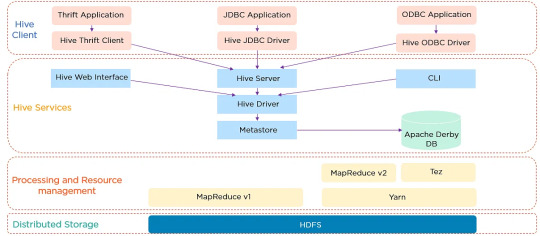
Hive Architecture
Hive's data warehouse concept revolves around the idea of abstracting the complexity of distributed storage and processing, allowing users to focus on the data itself. This abstraction makes it easier for users to write queries without needing to know the intricacies of Hadoop.
Writing HiveQL Queries
HiveQL, or Hive Query Language, is a SQL-like query language that allows users to query data stored in Hadoop. While similar to SQL, HiveQL is specifically designed to handle the complexities of big data. Here are some basic HiveQL queries to get you started:
Creating a Table:
CREATE TABLE employees ( id INT, name STRING, salary FLOAT );
Loading Data:
LOAD DATA INPATH '/user/hive/data/employees.csv' INTO TABLE employees;
Querying Data:
SELECT name, salary FROM employees WHERE salary > 50000;
HiveQL supports a wide range of functions and features, including joins, group by, and aggregations, making it a versatile tool for data analysis.
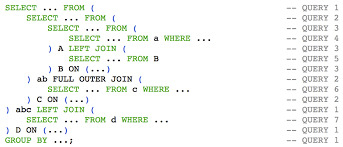
HiveQL Queries
SparkSQL vs HiveQL: Similarities & Differences
Both SparkSQL and HiveQL offer SQL-like querying capabilities, but they have distinct differences:
Execution Engine: HiveQL relies on Hadoop's MapReduce engine, which can be slower due to its batch processing nature. SparkSQL, on the other hand, leverages Apache Spark's in-memory computing, resulting in faster query execution.
Ease of Use: HiveQL is easier for those familiar with traditional SQL syntax, while SparkSQL requires understanding Spark's APIs and dataframes.
Integration: SparkSQL integrates well with Spark's ecosystem, allowing for seamless data processing and machine learning tasks. HiveQL is more focused on data warehousing and batch processing.
Despite these differences, both languages provide powerful tools for interacting with big data, and knowing when to use each is key to mastering them.
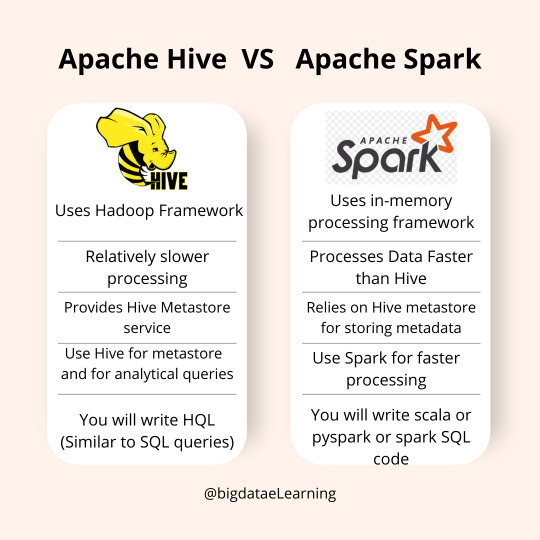
SparkSQL vs HiveQL
Running SQL Queries on Massive Distributed Data
Running SQL queries on massive datasets requires careful consideration of performance and efficiency. Hive and SparkSQL both offer powerful mechanisms to optimize query execution, such as partitioning and bucketing.
Partitioning, Bucketing, and Performance Tuning
Partitioning and bucketing are techniques used to optimize query performance in Hive and SparkSQL:
Partitioning: Divides data into distinct subsets, allowing queries to skip irrelevant partitions and reduce the amount of data scanned. For example, partitioning by date can significantly speed up queries that filter by specific time ranges.
Bucketing: Further subdivides data within partitions into buckets based on a hash function. This can improve join performance by aligning data in a way that allows for more efficient processing.
Performance tuning in Hive and SparkSQL involves understanding and leveraging these techniques, along with optimizing query logic and resource allocation.

Hive and SparkSQL Partitioning & Bucketing
FAQ
1. What is the primary use of Hive in a Hadoop environment? Hive is primarily used as a data warehousing solution, enabling users to query and manage large datasets with an SQL-like interface.
2. Can HiveQL and SparkSQL be used interchangeably? While both offer SQL-like querying capabilities, they have different execution engines and integration capabilities. HiveQL is suited for batch processing, while SparkSQL excels in in-memory data processing.
3. How do partitioning and bucketing improve query performance? Partitioning reduces the data scanned by dividing it into subsets, while bucketing organizes data within partitions, optimizing joins and aggregations.
4. Is it necessary to know Java or Scala to use SparkSQL? No, SparkSQL can be used with Python, R, and SQL, though understanding Spark's APIs in Java or Scala can provide additional flexibility.
5. How does SparkSQL achieve faster query execution compared to HiveQL? SparkSQL utilizes Apache Spark's in-memory computation, reducing the latency associated with disk I/O and providing faster query execution times.
Home
instagram
#Hive#SparkSQL#DistributedComputing#BigDataProcessing#SQLOnBigData#ApacheSpark#HadoopEcosystem#DataAnalytics#SunshineDigitalServices#TechForAnalysts#Instagram
2 notes
·
View notes
Text

AI’s Role in Business Process Automation
Automation has come a long way from simply replacing manual tasks with machines. With AI stepping into the scene, business process automation is no longer just about cutting costs or speeding up workflows—it’s about making smarter, more adaptive decisions that continuously evolve. AI isn't just doing what we tell it; it’s learning, predicting, and innovating in ways that redefine how businesses operate.
From hyperautomation to AI-powered chatbots and intelligent document processing, the world of automation is rapidly expanding. But what does the future hold?
What is Business Process Automation?
Business Process Automation (BPA) refers to the use of technology to streamline and automate repetitive, rule-based tasks within an organization. The goal is to improve efficiency, reduce errors, cut costs, and free up human workers for higher-value activities. BPA covers a wide range of functions, from automating simple data entry tasks to orchestrating complex workflows across multiple departments.
Traditional BPA solutions rely on predefined rules and scripts to automate tasks such as invoicing, payroll processing, customer service inquiries, and supply chain management. However, as businesses deal with increasing amounts of data and more complex decision-making requirements, AI is playing an increasingly critical role in enhancing BPA capabilities.
AI’s Role in Business Process Automation
AI is revolutionizing business process automation by introducing cognitive capabilities that allow systems to learn, adapt, and make intelligent decisions. Unlike traditional automation, which follows a strict set of rules, AI-driven BPA leverages machine learning, natural language processing (NLP), and computer vision to understand patterns, process unstructured data, and provide predictive insights.
Here are some of the key ways AI is enhancing BPA:
Self-Learning Systems: AI-powered BPA can analyze past workflows and optimize them dynamically without human intervention.
Advanced Data Processing: AI-driven tools can extract information from documents, emails, and customer interactions, enabling businesses to process data faster and more accurately.
Predictive Analytics: AI helps businesses forecast trends, detect anomalies, and make proactive decisions based on real-time insights.
Enhanced Customer Interactions: AI-powered chatbots and virtual assistants provide 24/7 support, improving customer service efficiency and satisfaction.
Automation of Complex Workflows: AI enables the automation of multi-step, decision-heavy processes, such as fraud detection, regulatory compliance, and personalized marketing campaigns.
As organizations seek more efficient ways to handle increasing data volumes and complex processes, AI-driven BPA is becoming a strategic priority. The ability of AI to analyze patterns, predict outcomes, and make intelligent decisions is transforming industries such as finance, healthcare, retail, and manufacturing.
“At the leading edge of automation, AI transforms routine workflows into smart, adaptive systems that think ahead. It’s not about merely accelerating tasks—it’s about creating an evolving framework that continuously optimizes operations for future challenges.”
— Emma Reynolds, CTO of QuantumOps
Trends in AI-Driven Business Process Automation
1. Hyperautomation
Hyperautomation, a term coined by Gartner, refers to the combination of AI, robotic process automation (RPA), and other advanced technologies to automate as many business processes as possible. By leveraging AI-powered bots and predictive analytics, companies can automate end-to-end processes, reducing operational costs and improving decision-making.
Hyperautomation enables organizations to move beyond simple task automation to more complex workflows, incorporating AI-driven insights to optimize efficiency continuously. This trend is expected to accelerate as businesses adopt AI-first strategies to stay competitive.
2. AI-Powered Chatbots and Virtual Assistants
Chatbots and virtual assistants are becoming increasingly sophisticated, enabling seamless interactions with customers and employees. AI-driven conversational interfaces are revolutionizing customer service, HR operations, and IT support by providing real-time assistance, answering queries, and resolving issues without human intervention.
The integration of AI with natural language processing (NLP) and sentiment analysis allows chatbots to understand context, emotions, and intent, providing more personalized responses. Future advancements in AI will enhance their capabilities, making them more intuitive and capable of handling complex tasks.
3. Process Mining and AI-Driven Insights
Process mining leverages AI to analyze business workflows, identify bottlenecks, and suggest improvements. By collecting data from enterprise systems, AI can provide actionable insights into process inefficiencies, allowing companies to optimize operations dynamically.
AI-powered process mining tools help businesses understand workflow deviations, uncover hidden inefficiencies, and implement data-driven solutions. This trend is expected to grow as organizations seek more visibility and control over their automated processes.
4. AI and Predictive Analytics for Decision-Making
AI-driven predictive analytics plays a crucial role in business process automation by forecasting trends, detecting anomalies, and making data-backed decisions. Companies are increasingly using AI to analyze customer behaviour, market trends, and operational risks, enabling them to make proactive decisions.
For example, in supply chain management, AI can predict demand fluctuations, optimize inventory levels, and prevent disruptions. In finance, AI-powered fraud detection systems analyze transaction patterns in real-time to prevent fraudulent activities. The future of BPA will heavily rely on AI-driven predictive capabilities to drive smarter business decisions.
5. AI-Enabled Document Processing and Intelligent OCR
Document-heavy industries such as legal, healthcare, and banking are benefiting from AI-powered Optical Character Recognition (OCR) and document processing solutions. AI can extract, classify, and process unstructured data from invoices, contracts, and forms, reducing manual effort and improving accuracy.
Intelligent document processing (IDP) combines AI, machine learning, and NLP to understand the context of documents, automate data entry, and integrate with existing enterprise systems. As AI models continue to improve, document processing automation will become more accurate and efficient.
Going Beyond Automation
The future of AI-driven BPA will go beyond automation—it will redefine how businesses function at their core. Here are some key predictions for the next decade:
Autonomous Decision-Making: AI systems will move beyond assisting human decisions to making autonomous decisions in areas such as finance, supply chain logistics, and healthcare management.
AI-Driven Creativity: AI will not just automate processes but also assist in creative and strategic business decisions, helping companies design products, create marketing strategies, and personalize customer experiences.
Human-AI Collaboration: AI will become an integral part of the workforce, working alongside employees as an intelligent assistant, boosting productivity and innovation.
Decentralized AI Systems: AI will become more distributed, with businesses using edge AI and blockchain-based automation to improve security, efficiency, and transparency in operations.
Industry-Specific AI Solutions: We will see more tailored AI automation solutions designed for specific industries, such as AI-driven legal research tools, medical diagnostics automation, and AI-powered financial advisory services.
AI is no longer a futuristic concept—it’s here, and it’s already transforming the way businesses operate. What’s exciting is that we’re still just scratching the surface. As AI continues to evolve, businesses will find new ways to automate, innovate, and create efficiencies that we can’t yet fully imagine.
But while AI is streamlining processes and making work more efficient, it’s also reshaping what it means to be human in the workplace. As automation takes over repetitive tasks, employees will have more opportunities to focus on creativity, strategy, and problem-solving. The future of AI in business process automation isn’t just about doing things faster—it’s about rethinking how we work all together.
Learn more about DataPeak:
#datapeak#factr#technology#agentic ai#saas#artificial intelligence#machine learning#ai#ai-driven business solutions#machine learning for workflow#ai solutions for data driven decision making#ai business tools#aiinnovation#digitaltools#digital technology#digital trends#dataanalytics#data driven decision making#data analytics#cloudmigration#cloudcomputing#cybersecurity#cloud computing#smbs#chatbots
2 notes
·
View notes
Text
What is Cloud Computing ?
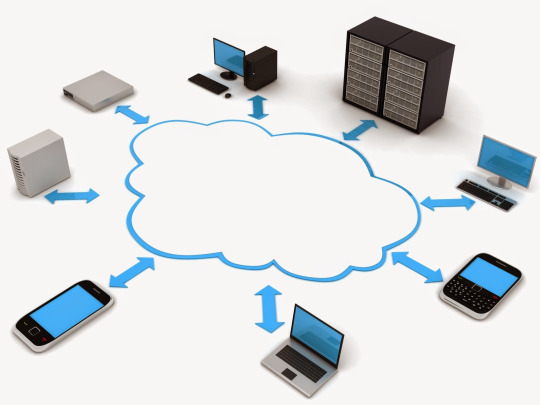
Cloud computing has become a widely discussed topic in recent years, but explaining it in simple terms to someone without a background in computer science can be challenging. Allow me to break it down for you.
Cloud computing is a method of storing and accessing data and programs over the internet, rather than keeping them on your personal computer or mobile device. To illustrate this, let's consider online email services like Gmail or Outlook. When you use these services, you can access your emails from anywhere because they are stored in the cloud. This means you don't need to install any special software or save your messages on your hard drive. Instead, your emails are stored on remote servers owned by companies like Google or Microsoft. You can access them from any device connected to the internet, regardless of your location.
Understanding Servers in the Cloud
Now, let's delve into the concept of servers in the cloud.
The data stored in the cloud is saved on physical servers, which are powerful computers capable of storing and processing vast amounts of information. These servers are typically housed in data centers, which are specialized facilities that accommodate thousands of servers and other equipment. Data centers require significant power, cooling, security, and connectivity to operate efficiently and reliably.

Microsoft and Google are two of the largest cloud providers globally, and they have data centers located in various regions and continents. Here are some examples of where their data centers are located, according to search results:
Microsoft has data centers in North America, South America, Europe, Asia, Africa, and Australia.
Google has data centers in North America, South America, Europe, and Asia.
#codeblr#code#javascript#java development company#studyblr#progblr#programming#comp sci#web design#web developers#web development#website design#webdev#website#tech#html css#learn to code#cloud computing#datascience#dataanalytics
50 notes
·
View notes
Text
𝐓𝐨𝐩 5 𝐌𝐮𝐬𝐭-𝐊𝐧𝐨𝐰 𝐃𝐚𝐭𝐚 𝐒𝐜𝐢𝐞𝐧𝐜𝐞 𝐓𝐨𝐨𝐥𝐬 – 2025 𝐄𝐝𝐢𝐭𝐢𝐨𝐧!
Looking to level up your data science skills? These 5 must-know tools are essential for every data scientist in 2025! From data wrangling to machine learning, these tools will take your projects to the next level. 💡📊
Watch - https://youtube.com/shorts/n-hNExa09sI
Which data science tool do YOU swear by? Drop your thoughts below! ⬇️
🔔 Subscribe for more data science tips & trends!
#DataScienceTools#DataScience#MachineLearning#AI#DataAnalytics#TechTools#DataVisualization#BigData#DataAnalysis#TechTrends
2 notes
·
View notes
Text
Artificial Intelligence in Digital Marketing: Definition and Tools
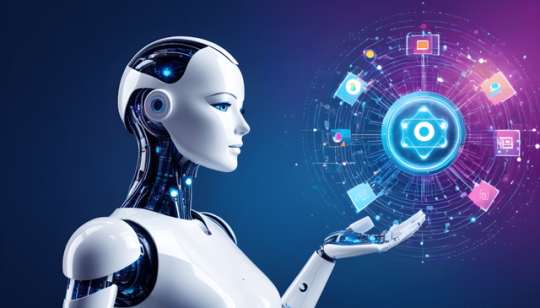
AI in digital marketing refers to employing intelligent technologies to enhance how businesses engage with and sell to their customers. Assists with data management, automation, customization, and refinement of campaigns. But what exactly does AI do in marketing? It uses machine learning, data analysis, and natural language processing to perform tasks faster and more accurately than humans.
Many make use of AI to simplify marketing. Customer service chatbots respond to clients in seconds. Tools using predictive analytics make it easier for businesses to grasp future shifts. Some programs are capable of generating content for blogs, emails, and even product descriptions. Messages intended for particular customers can be tailored through personalization platforms, making them more appealing. Marketing automation tools streamline tedious processes such as email dispatching and advertising, thereby cutting down on time and effort.
AI enhances digital ads as well. It modifies cost-per-click bids, targets audiences, and adjusts creatives simultaneously in order for businesses to derive the most benefit. Sentiment analysis tools automatically filter and analyze social media channels and online reviews to assess client’s’ perceptions. Customer segmentation tools analyze persona’s behavior to aggregate them into more manageable groups, thus enhancing campaign efficiency.
What are the advantages? AI saves labor in completing repetitive tasks. It provides businesses with comprehensive insights, assisting in making better decisions. It delivers content at scale and enhances the customer experience by providing tailored suggestions. It even has the capacity to determine trends, which is advantageous for businesses.
AI can, however, contain imperfections. If an algorithm is trained using biased data, it may contain biases. Misinformation in AI-generated content can lead to erroneous information being disseminated to customers. There are issues of privacy and security with a significant amount of data. Some people are concerned with the issue of transparency—who owns the content generated by AI?
AI is evolving in digital marketing, creating new opportunities and difficulties at the same time. To remain relevant in today's society, engaging with professionals is the best way to go. PLUS27digital specializes in AI-based marketing strategy development that deliver incredible outcomes. Would you like to learn how AI could improve your business? Let's have a discussion.
#AI#ArtificialIntelligence#DigitalMarketing#MarketingTech#MachineLearning#NLP#MarketingStrategy#MarketingAutomation#BusinessGrowth#Chatbots#PredictiveAnalytics#Personalization#DataAnalytics#ContentMarketing#AdOptimization#CustomerInsights#AIForBusiness#MarketingInnovation#SmartMarketing#AIContent#AISEO#DigitalTransformation#MarketingTrends#DataPrivacy#AIEthics#OnlineMarketing#SocialMediaMarketing#SEO#EcommerceMarketing#StartupMarketing
2 notes
·
View notes
Text
Customer Feedback Dashboards for Quick Business Fixes
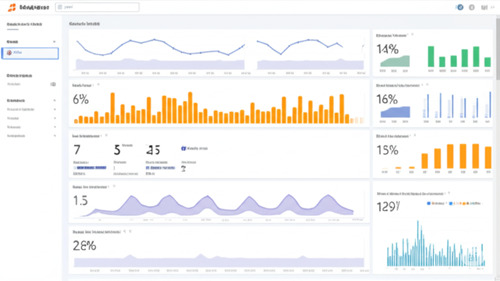
Learn how customer feedback dashboards, like those created with Zoho Analytics, provide instant insights into customer sentiment. Quickly identify and address business issues, from checkout frustrations to product improvements, and enhance customer satisfaction.
Link : https://maction.com/customer-feedback-dashboards-for-quick-business-fixes/
#marketresearch#marketing#business#research#digitalmarketing#marketingstrategy#branding#market#entrepreneur#startup#covid#survey#dataanalytics#data#insights#marketanalysis#technology#surveys#datacollection#socialmediamarketing#entrepreneurship#paidsurveys#customerexperience#leadgeneration#dataanalysis#businessstrategy#socialmedia#contentmarketing#emailmarketing#marketingdigital
2 notes
·
View notes
Text
Unlocking Business Growth with a Consumer Intelligence Solution
In today’s fast-paced market, understanding consumer behavior is crucial for businesses aiming to stay competitive. A robust Consumer Intelligence Solution enables companies to make data-driven decisions, refine marketing strategies, and minimize risks. Kentrix offers advanced analytics tools that help businesses gain deep insights into customer preferences, spending habits, and market trends. From targeted marketing and customer profiling to location intelligence and financial risk assessment, these solutions empower businesses to optimize operations and drive sustainable growth. By leveraging Kentrix’s innovative approach, companies can make informed decisions that enhance customer engagement and maximize profitability.
2 notes
·
View notes
Text

Wielding Big Data Using PySpark
Introduction to PySpark
PySpark is the Python API for Apache Spark, a distributed computing framework designed to process large-scale data efficiently. It enables parallel data processing across multiple nodes, making it a powerful tool for handling massive datasets.
Why Use PySpark for Big Data?
Scalability: Works across clusters to process petabytes of data.
Speed: Uses in-memory computation to enhance performance.
Flexibility: Supports various data formats and integrates with other big data tools.
Ease of Use: Provides SQL-like querying and DataFrame operations for intuitive data handling.
Setting Up PySpark
To use PySpark, you need to install it and set up a Spark session. Once initialized, Spark allows users to read, process, and analyze large datasets.
Processing Data with PySpark
PySpark can handle different types of data sources such as CSV, JSON, Parquet, and databases. Once data is loaded, users can explore it by checking the schema, summary statistics, and unique values.
Common Data Processing Tasks
Viewing and summarizing datasets.
Handling missing values by dropping or replacing them.
Removing duplicate records.
Filtering, grouping, and sorting data for meaningful insights.
Transforming Data with PySpark
Data can be transformed using SQL-like queries or DataFrame operations. Users can:
Select specific columns for analysis.
Apply conditions to filter out unwanted records.
Group data to find patterns and trends.
Add new calculated columns based on existing data.
Optimizing Performance in PySpark
When working with big data, optimizing performance is crucial. Some strategies include:
Partitioning: Distributing data across multiple partitions for parallel processing.
Caching: Storing intermediate results in memory to speed up repeated computations.
Broadcast Joins: Optimizing joins by broadcasting smaller datasets to all nodes.
Machine Learning with PySpark
PySpark includes MLlib, a machine learning library for big data. It allows users to prepare data, apply machine learning models, and generate predictions. This is useful for tasks such as regression, classification, clustering, and recommendation systems.
Running PySpark on a Cluster
PySpark can run on a single machine or be deployed on a cluster using a distributed computing system like Hadoop YARN. This enables large-scale data processing with improved efficiency.
Conclusion
PySpark provides a powerful platform for handling big data efficiently. With its distributed computing capabilities, it allows users to clean, transform, and analyze large datasets while optimizing performance for scalability.
For Free Tutorials for Programming Languages Visit-https://www.tpointtech.com/
2 notes
·
View notes
Text
Pattern Recognition

🔍 Pattern analysis reveals 78% of containment failures follow predictable degradation sequences. Standard protocols miss critical precursor signals entirely.
#SCP#ContainmentBreach#PatternRecognition#AnalogHorror#Worldbuilding#BlackSwanLabs#DataAnalytics#ARG#Paranormal#NarrativeDesign
2 notes
·
View notes
Video
tumblr
แพรวหัวจะปวด Swift 2023 ใหม่ จะมาอีกแล้วหรอ by ซูซูกิ พะแพรว ช๊อป Via Flickr: สนใจสั่งจองซูซูกิทุกรุ่น ทักหาเซลล์แพรวนะคะ ☎️ 091-765-7786 เมมเบอร์ไลน์ขึ้นจ้า แอ๊ดไลน์คลิ๊ก 👉 line.me/ti/p/PnJryN3jQo Facebook เพจ 👉 www.facebook.com/Suzukisale0011/ Website 👉https://suzuki9199.blogspot.com/?view=flipcard แผนที่โชว์รูม ซูซูกิ ราชเทวี สี่แยกอุรพงษ์ 👉 goo.gl/maps/6vnL9JV2p3WyKZ817 benmeedee1.wixsite.com/my-site/blog
#suzuki#suzukicar#Kairod24#Kaidee#cfao#One2car#ciaz#Pantipmarket#Traderod#Chobrod#berline#Thaicar#BestCar#cars#sedan#sales#Shopee#dataanalytics#researchanalyst#jato#india#ERTIGA#CELERIO#SWIFT#ford#laser#keepgrowing#glassrailing#carbide#flickr
8 notes
·
View notes
Text

Early Bird Discount – 15% Off on Data Science, Machine Learning & AI!
Enroll now and save 15% on our Data Science, Machine Learning, and AI courses. Grab this limited-time offer and start your journey toward a successful tech career today!
For more information on the Data Science & Machine Learning course, visit the 1stepgrow website:
🔗 1stepgrow.com
📧 Contact: [email protected]
📞 Phone: 8951240606
5 notes
·
View notes
Text
ChatGPT vs DeepSeek: An Inclusive Comparison
Although both are AI-generated tools. Everyone already knows that ChatGPT is mostly used for conversational works whereas DeepSeek is used for data analysis, Btw it is new, it is currently being launched in China. So let's see ChatGPT vs DeepSeek: An Inclusive Comparison throughout this Blog.
2 notes
·
View notes
Text
Python for Data Science: From Beginner to Expert – A Complete Guide!
Python has become the go-to language for data science, thanks to its flexibility, powerful libraries, and strong community support. In this video, we’ll explore why Python is the best choice for data scientists and how you can master it—from setting up your environment to advanced machine learning techniques.
🔹 What You'll Learn:
✅ Why Python is essential for data science
✅ Setting up Python and key libraries (NumPy, Pandas, Matplotlib) ✅ Data wrangling, visualization, and transformation
✅ Building machine learning models with Scikit-learn
✅ Best practices to enhance your data science workflow 🚀 Whether you're a beginner or looking to refine your skills, this guide will help you level up in data science with Python. 📌 Don’t forget to like, subscribe, and hit the notification bell for more data science and Python content!
youtube
#python#datascience#machinelearning#ai#bigdata#deeplearning#technology#programming#coding#developer#pythonprogramming#pandas#numpy#matplotlib#datavisualization#ml#analytics#automation#artificialintelligence#datascientist#dataanalytics#Youtube
3 notes
·
View notes
Text
instagram
ou can become a data analyst ⤵️📈📊💯 Here’s what you need to do: - believe in yourself - learn Excel -learn SQL - learn Tableau - build Portfolio - update Linkedin - optimize Resume - Use Network -apply for jobs That’s the way. . . .
#data#dataanalyst#dataanalytics#analyst#analytics#workfromhome#codinglife#tech#teknoloji#programming#datascience#programmer#python#machinelearning#artificialintelligence#deeplearning#code#ai#Instagram
5 notes
·
View notes